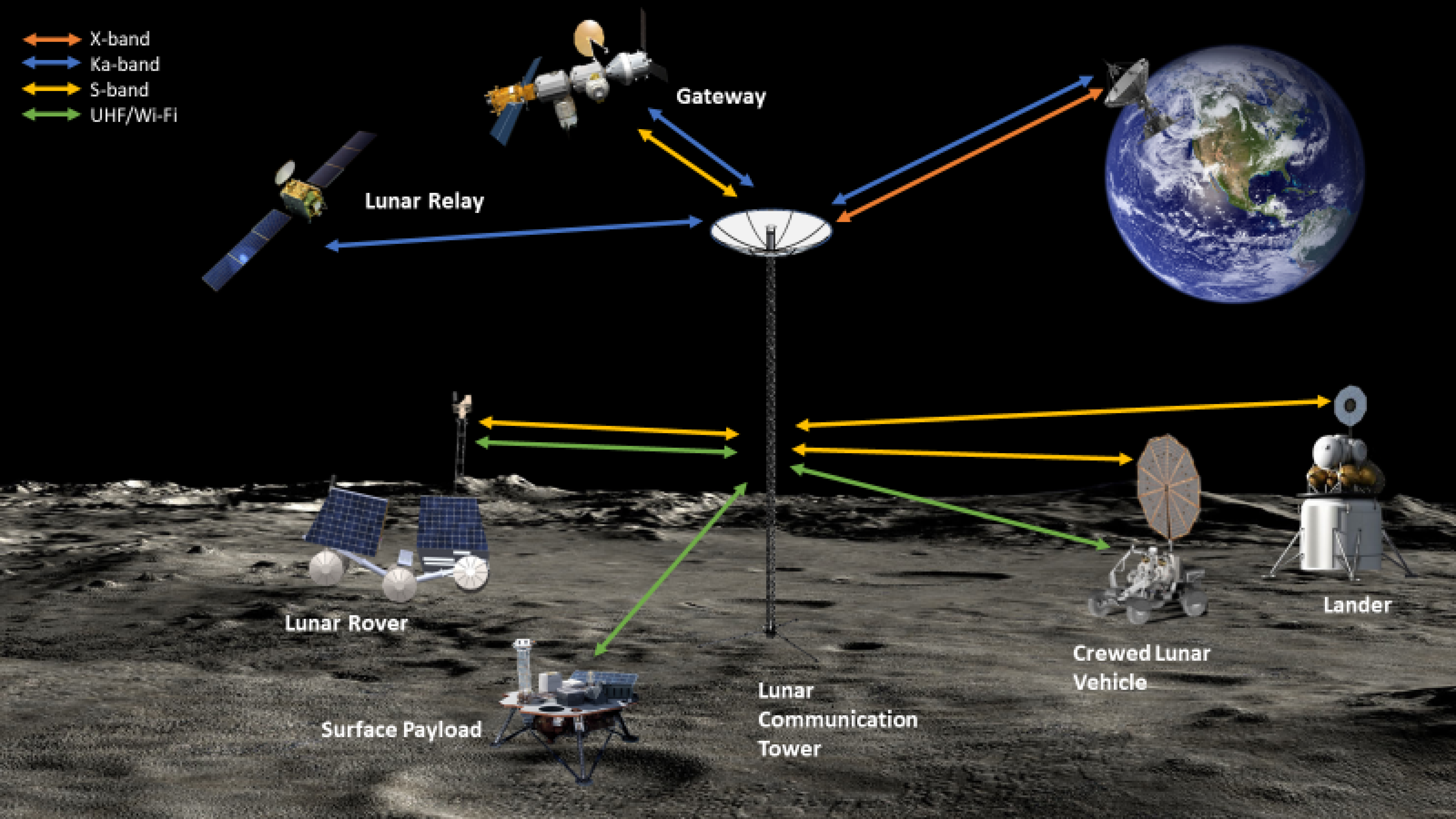In the vast expanse of space, where silence reigns and distances are measured in light-years, effective communication is the lifeline connecting humanity’s exploratory endeavors back home to Earth. With human lives involved, any space mission requires robust communications infrastructure in order to succeed safely, and the further the distance from Earth the more critical these communications become. Communications connectivity, therefore, is particularly critical to the Artemis lunar program, spearheaded by NASA, which is paving the way for sustainable, long-term human and robotic exploration of the Moon as well as, ultimately, human missions as far as Mars and beyond.
At the heart of this ambitious endeavor lies a need for the development of lunar communications networks, both to support continued exploration of the Moon beyond the achievements of the Apollo program and the first human exploration of Mars. A robust infrastructure is required which is capable of supporting human life and enabling human scientific exploration further and further from Earth.
But to develop networks capable of effectively communicating from the lunar South Pole to the surface of Mars, the infrastructure must be able to scale up to meet the demand over time. Enter lunar communications networks – the first step that will connect astronauts on the Moon to one another as well as to mission control on Earth, facilitating the exchange of data, commands, and vital communications.
Communication in space poses unique challenges, especially as the goals of the Artemis program grow beyond those of Apollo. Traditional methods, such as radio waves, are susceptible to interference from cosmic phenomena and planetary obstacles. Moreover, the vast distances involved introduce significant delays, making real-time communication impossible over long distances.
To overcome these challenges, lunar communications networks leverage a combination of technologies, including satellites, relays, and advanced protocols. These networks enable continuous communication between multiple lunar assets and Earth, ensuring that astronauts remain connected and supported throughout their missions.
As part of the broader Artemis program, the Moon to Mars Initiative emphasizes the interconnectedness of lunar exploration and future missions to Mars. It recognizes the Moon not only as a destination in its own right but also as a testing ground for the technologies and techniques needed for interplanetary travel.
Lunar communications networks play a pivotal role in this initiative, serving as the link that bridges the gap between Earth and Mars. By establishing robust communication infrastructure on the Moon, NASA lays the groundwork for extending humanity’s reach to the Red Planet and beyond, enabling the exchange of critical data and ensuring the safety and success of future missions.
So, what exactly goes into building a lunar communications network? At its core is a series of relay satellites placed in lunar orbit, strategically positioned to provide continuous coverage of the lunar surface. These satellites act as communication hubs, relaying signals between lunar landers, rovers, habitats, and other assets on the surface and ground stations on Earth.
But it’s not just about hardware. Software plays an equally vital role, with advanced communication protocols optimizing data transmission, incorporating delay tolerant networking, and ensuring reliable connectivity. These protocols incorporate techniques such as error correction and signal amplification to overcome the challenges posed by the lunar environment.
While the concept of lunar communications networks is not new, the Artemis program represents a significant leap forward in their development and implementation. NASA, alongside its international and commercial partners, is pushing the boundaries of technology to create communication systems that are more robust, reliable, and efficient than ever before.
One innovation being developed through concepts like LunaNet is the use of laser communications, which offer higher data transfer rates and lower latency compared to traditional radio frequencies. NASA’s Lunar Laser Communications Demonstration (LLCD) and Laser Communications Relay Demonstration (LCRD) missions are paving the way for the widespread adoption of this transformative technology, heralding a new era of space communications.
The success of the Artemis program relies not only on the expertise of NASA but also on collaboration with international partners and the burgeoning space industry. Countries such as Canada, Japan, and members of the European Union have already committed to contributing hardware and expertise to the development of lunar communications networks, ensuring a truly global effort.
Likewise, commercial space companies are playing an increasingly prominent role, leveraging their agility and innovation to drive progress in key areas such as satellite deployment, network management, and data services. Comsat Architects is one such company helping to pave the way towards continued exploration of our solar system through our collaboration with NASA. At Comsat, we provide communications analysis and systems engineering support in direct service of the Artemis program through collaboration with the Program Systems Engineering (PSE) office under NASA’s Space Communications and Navigation (SCaN) program. Through our work, we are helping architect the future of space communications in service of furthering humanity’s exploration of the solar system we call home.
As the Artemis program marches forward, the importance of lunar communications networks will only grow. With each successful mission, we move closer to a future in which humans not only walk on the Moon but establish a permanent, sustainable presence in its orbit and on its surface.
But the ultimate destination lies beyond the Moon – on Mars, the next frontier of human exploration. By investing in lunar communications infrastructure today, we lay the foundation for tomorrow’s missions to the Red Planet and for humanity’s next great leap into the stars.




